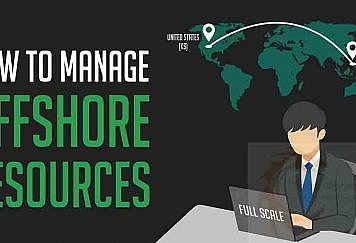Today’s ever-evolving business environment demands that companies make informed decisions to succeed, with data-driven strategies playing an increasingly central role in shaping operations. Here, we explore some key data analysis tools like Google Analytics and Tableau, examining their contribution towards effective decision-making while uncovering how AI transcription enhances efficiency during analysis.
The Landscape of Data Analysis Tools
Companies use tools selected by themselves for decision-making to transform raw, unstructured data into actionable insights that drive their strategic planning process. Google Analytics and Tableau stand out among various options as major players here: these technological compasses help businesses navigate data amidst an expansive ocean by showing pathways leading to insight. When selecting tools in this environment, selection choices become instrumental in shaping the success or failure of data-driven strategies.
Businesses face unique data analysis challenges every day; tools like Google Analytics and Tableau are becoming ever more essential in assisting these enterprises to understand how best to utilize data analysis for growth and innovation. No longer mere accessories, these vital instruments enable organizations to navigate these complexities with confidence, turning obstacles into opportunities.
Google Analytics: Unveiling Customer Behavior
Imagine Google Analytics as a silent but ever-vigilant online ally, standing guard and providing businesses with profound insights into how their customers behave in the digital realm. It transcends the superficial counting of page views, assuming the role of a digital detective that unveils the subtle nuances of user interactions with a website. It meticulously deciphers the user’s journey, revealing not only which pages are popular but also painting a vivid picture of the entire online experience. Businesses gain the ability to discern how long visitors linger, what captures their attention, and the factors that prompt their departure.
The real magic lies in Google Analytics’ capacity to understand the audience more deeply. Beyond statistical data, it constructs a narrative of user engagement, enabling businesses to make targeted enhancements to their online presence. It becomes a guide, leading organizations to create a tailored online experience that not only captures but retains the attention of their audience. In the world of digital relevance, Google Analytics has transformed from a mere tracker to an invaluable tool that shapes businesses’ online landscapes according to the preferences and expectations of their audience.
Tableau: Transforming Data into Actionable Insights
Enter Tableau, the data superhero. Tableau is here to save us, providing users with clear visual representations of complex data for quick comprehension of vast quantities of information. It serves not just as a tool; rather it’s more like an assistant helping decision-makers quickly make sense of vast volumes of data. Tableau acts as an artist’s brush, painting a clear picture that goes beyond confusing numbers. Real businesses have used Tableau to not only make things run smoother but to completely change how they look at and use data. It isn’t just about making data look pretty; it’s a helper for smart thinking and better decision-making.
Comparative Study: Choosing the Right Tool for the Job
Now let’s compare Google Analytics and Tableau. Each tool possesses distinct strengths; thus the decision between them depends on a company’s business requirements.
Google Analytics excels in uncovering customer behavior patterns, giving businesses invaluable insight to refine online strategies. Furthermore, businesses use it to craft tailored customer experiences that resonate with audiences online. Tableau stands out by turning data into actionable insight with visual displays that assist decision-makers in quickly spotting patterns, trends, and opportunities within data.
Businesses must carefully consider when selecting an analytics tool the nature of their data, the level of visual interpretation needed, and the insights sought as they select an apt solution for data-driven decision-making strategies. The importance of selecting an adequate tool cannot be understated.
The Role of AI Transcription in Data Analysis
As we explore the efficiency gains offered by data analysis tools, it’s crucial to recognize the supporting role of AI transcription. AI transcription serves as the bridge between spoken insights and written documentation, contributing to streamlined data analysis. Imagine making important decisions at a meeting; automated transcription ensures that these discussions are accurately preserved for later reference, providing textual records as a written record for future referencing.
Conclusion
Data analysis tools come in all shapes and sizes. As businesses adapt in this age of information, navigating their way through this vast toolbox becomes not an option but an obligation. The synergy of data analysis tools, exemplified by Google Analytics and Tableau, along with the supporting role of AI transcription, guides businesses toward success.
Follow TechStrange for more!





